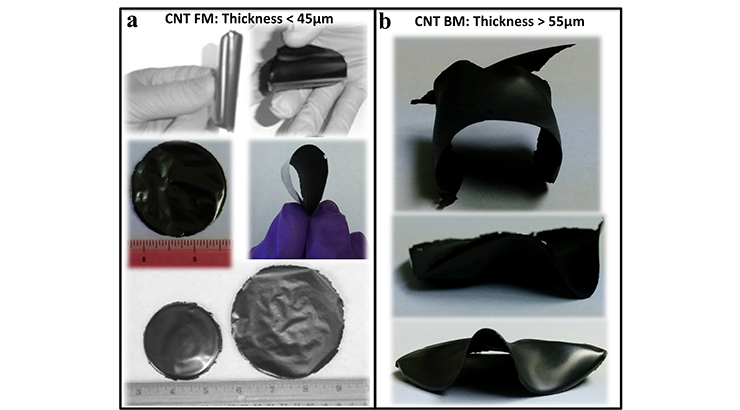Carbon Nanostructure Membranes
ID# 2012-4011
Technology Summary
Carbon nanotubes (CNTs) have been proposed and demonstrated as promising candidates for numerous applications in the emerging nanotechnologies due to their high mechanical strength, electrical conductivity, surface area, and chemical functionalizability. Most of these applications require macroscopic structures. However, in most cases, the properties of the macrostructured materials are abysmal compared to that of the individual CNTs. This invention provides a way to processes CNT powder into flexible, robust, and binder-free macro-size membranes using a liquid-phase post-synthesis self-assembly (LP-PSSA) technique. A high-density liquid is used to spontaneously suspend the CNT powder and induce self-assembly, while the removal of the liquid via cryogenic trapping leads to the formation of the membrane.
Application & Market Utility
This process overcomes three critical challenges that none of the existing liquid-phase assembly of CNTs ((mechanical compaction, filtration, liquid-induced collapse, super acids) have been able to achieve: (1) it does not functionalize or damage the CNT skeletal structure, (2) it has limited or no degrading effects on the properties of the CNTs, and (3) the membranes have very high packing density with bulk density nearing that of individual CNTs.
Next Steps
Seeking licensing opportunities.

